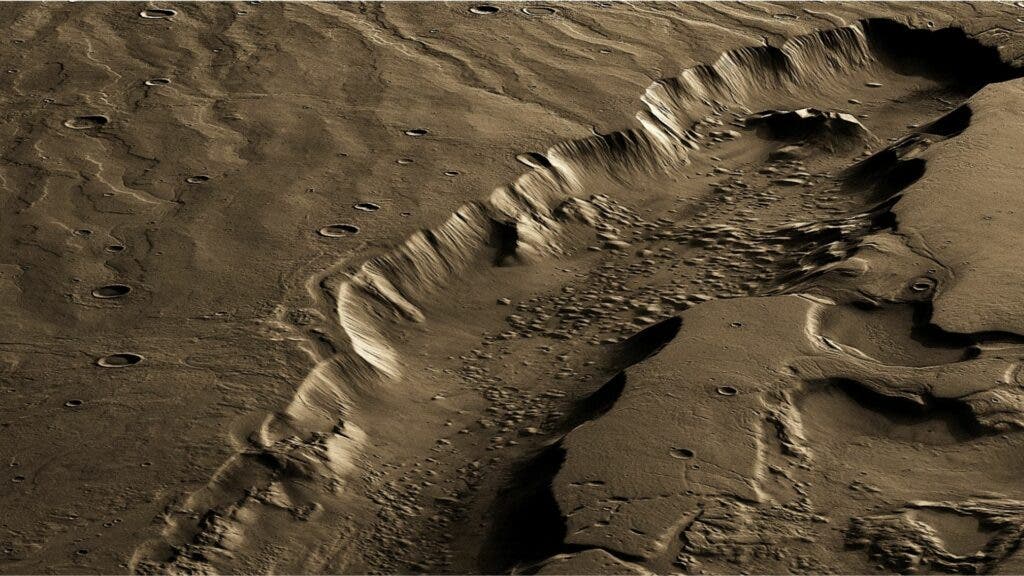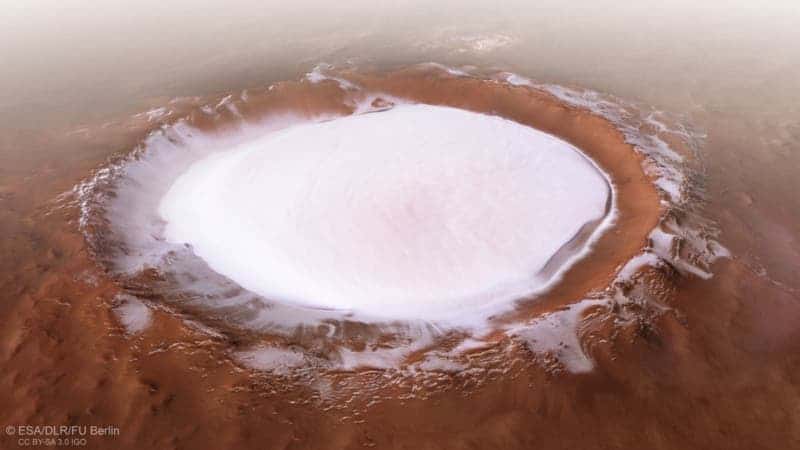
Life-sustaining water could have existed miles beneath the surface of Mars thanks to the melting of thick ice sheets by geothermal heat, new research has found. The discovery, made by a team led by Rutgers University scientists, suggests that 4 billion years ago the most likely place for life to prosper on the Red Planet was beneath its surface.
The study, published in the latest edition of the journal Science Advances, could solve a problem that also has implications for the existence of liquid water–and thus the early development of life–on our planet too. Thus far, researchers looking into the existence of liquid water early in both Earth and Mars’histories have been puzzled by the fact that the Sun would have been up to 70% less intense in its stellar-youth.

This lack of intensity coupled with findings of liquid water at this stage in the solar system’s history is referred to as ‘the faint-sun paradox,’ and should mean that Mars conditions were cold and arid in its deep history. This conclusion was contradicted by geological evidence of liquid water on the young planet. The problem could now be solved, for Mars at least, by geothermal activity.
“Even if greenhouse gases like carbon dioxide and water vapour are pumped into the early Martian atmosphere in computer simulations, climate models still struggle to support a long-term warm and wet Mars,” explains lead author Lujendra Ojha, assistant professor in the Department of Earth and Planetary Sciences in the School of Arts and Sciences at Rutgers University, New Brunswick. “We propose that the faint young sun paradox may be reconciled, at least partly, if Mars had high geothermal heat in its past.”
![Lujendra Ojha, Jacob Buffo, Suniti Karunatillake, Matthew Siegler. [2020]](https://cdn.zmescience.com/wp-content/uploads/2020/12/1_TPEtLZ_iRqAaM5ew-fZOMg.png)
The status of Mars climate billions of years ago and if freshwater could have existed its this point early in its history has been a source of heated debate in the scientific community for decades. The discussion has been further complicated by the question of whether water would have existed on the planet’s surface or deep underground? Climate models produced for Mars thus far have suggested average surface temperatures below the melting point of water at this point in its history.
Ojha and his team investigated this seeming contradiction in our understanding of Mars by modelling the average thickness of ice deposits in the Red Planet’s southern highlands. They also examined data collected by NASA’s InSight lander, which has been measuring the ‘vitals’ of the Red Planet since 2018.
Discovering that the thickness of these ice deposits did not exceed an average thickness of 2 kilometres, the team complemented this finding with estimates of both the planet’s average annual surface temperature and the flow of heat from its interior to its surface. The aim of this was to discover if the surface heat flow would have been strong enough to melt Mars’ ice sheets.
Indeed, the study seems to show that the flow of heat from both the crust and mantle of Mars would have been intense enough to begin melting at the base of its ice sheets.
Did Life on Mars prosper Beneath its Surface?

The wider implication of this revelation is that whatever the climate of Mars was like billions of years in its history if life once existed on the Red Planet, its subsurface would have been its most habitable region. Thus, life could have prospered, say the team, miles beneath the surface of our neighbour, sustained by the flow of freshwater.
Significantly, this supply of water would have existed even as Mars lost its magnetic field and its atmosphere was stripped away by harsh solar winds and blistering radiation. The process which ultimately deprived Mars of its surface liquid water. This means that life could have survived on the planet, hidden miles underground for much longer than the surface remained habitable.
“At such depths, life could have been sustained by hydrothermal activity and rock-water reactions,” says Ojha. “So, the subsurface may represent the longest-lived habitable environment on Mars.”
Source: Lujendra Ojha, Jacob Buffo, Suniti Karunatillake, Matthew Siegle. ‘Groundwater production from geothermal heating on early Mars and implication for early martian habitability,’ Science Advances,[2020] https://advances.sciencemag.org/lookup/doi/10.1126/sciadv.abb1669






